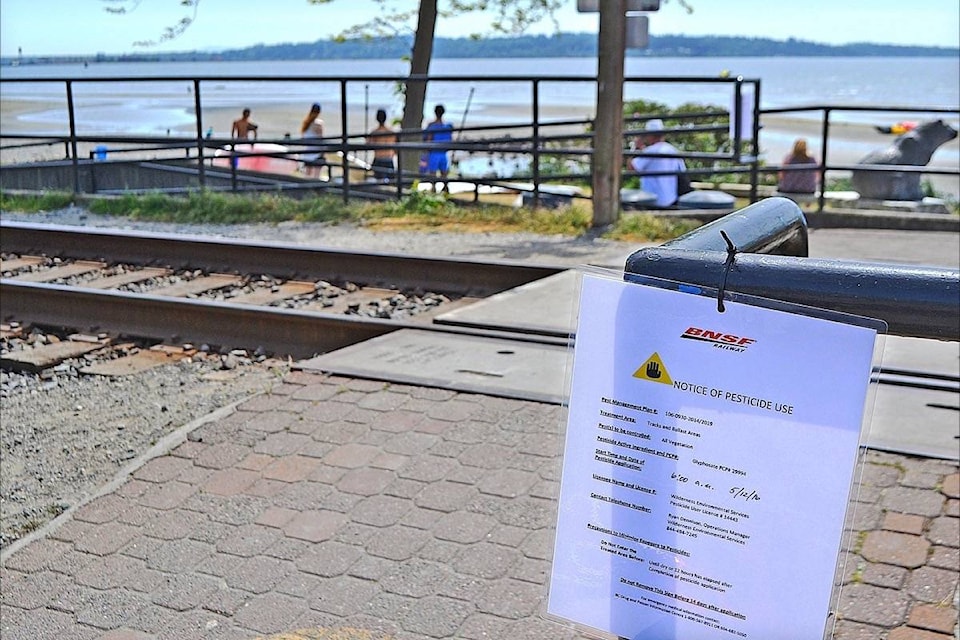A five-year plan for dealing with noxious weeds, invasive plants and the like on BNSF property – including the stretch running through White Rock and South Surrey – is raising concerns for at least one local resident.
Cal Pawson says he’s worried about the potential impact of “highly toxic” products on plants, animals and people, and that the distribution of them would not be limited to the targeted sites.
“It easily drifts with breezes into neighborhoods, and residue seeps into streams, ocean and tidal areas, and into underground aquifers (our drinking water),” Pawson writes in a letter this month to Peace Arch News.
“Children in particular are at risk, not to mention the people applying pesticides, and the local ecosystems.”
Pawson cc’ed the letter to consultant Art Guite, who was hired to put the pest-management plan together, and Guite said this week it’s “fairly normal” for the topic to spark concerns.
But, “the whole point of this is not to cause undue damage,” Guite, of Langley-based Art Guite Consulting, told PAN.
“It’s not a situation where people are just willy-nilly throwing chemical around. But it is controversial, there’s no question about that.”
Points raised by the public, Guite noted, will be taken into account in preparing the final version of the plan for review by the environment ministry.
Guite noted that having such a plan is not optional for BNSF. It’s mandated under the B.C. Integrated Pest Management Act – and, BNSF is not the only organization required to do it.
“Any large entity in all of the utilities have to have it,” he said. “If the area that they’re managing is over 20 hectares, they have to go through the pest-management plan system.”
According to the draft, it is a “vegetation management program,” applicable to all BNSF operations, largely those from New Westminster to White Rock.
“Most critical,” according to the draft, is controlling vegetation in the ballast, which is what the railroad ties are laid on.
“Any type of vegetation in the ballast sections can destabilize the track structure and compromise railway safety,” the draft states.
Other factors include ensuring visibility and ease of inspections along the line, and preventing fires.
Weeds and invasive plants listed include Japanese knotweed and common tansy; chemicals proposed to deal with them include glyphosate, diuron and dicamba.
Pawson’s letter notes glyphosate is the base of the product Roundup. BNSF’s use of that herbicide prompted city officials to investigate in May 2013, after it was mistakenly overused by crews, resulting in a three-metre stretch of grass along the south end of Bayview Park dying.
READ MORE: City looking into herbicide damage at waterfront
Only glyphosate-based herbicide products are to be used within White Rock, the draft notes.
Specific procedures for White Rock include placing treatment notices at each of the five public crossings. White Rock is the only area noted to have high enough pedestrian traffic to qualify the city for those notices, the draft states.
In his letter, Pawson implored, “for the health of the planet, the environment and humanity,’ that only safe and organic methods be used.
Guite said all of the products proposed for use are registered with the federal government, as is how they are applied.
And when they are used, it’s “not done for cosmetic purposes.”
“This is done because if you don’t do it, the railroad bed will not be safe,” Guite said.
Members of the public still have time to weigh in. Guite can be reached at 604-337-8016 or by email at artguiteconsulting@gmail.com
